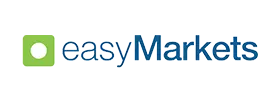Forex, short for foreign exchange, is one of the largest and most liquid markets in the world, with an average daily turnover exceeding $7.5 trillion. This decentralised, over-the-counter market enables participants to trade national currencies against each other, facilitating both investment and price speculation. In turn, speculation with derivative instruments such as contracts for difference (CFDs) involves the use of leverage, a powerful tool that enables traders to open larger positions with relatively little initial capital.
With that said, leverage should be approached cautiously, as it can amplify both potential profits and losses. Various leverage ratios are available, with 1:1000 being among the highest offered in some jurisdictions. This ratio enables traders to control a position worth 1,000 times their original investment. In this article, we explore the concept of using 1:1000 leverage in forex trading, how it works, and its advantages and disadvantages. We also discuss the regulatory landscape surrounding its availability.

The list below shows the best forex brokers offering 1:1000 leverage:
Top 7 Forex Brokers with 1:1000 Leverage
-
BlackBull Markets
- Broker boasting lightning-fast execution speed
- ECN brokers with tight spreads from 0.0 pips
- $0 minimum deposit requirement
Trading InstrumentsDeposit Methods- Commodities CFDs
- Crypto CFDs
- Forex CFDs
- Indices CFDs
- Metals CFDs
- Stock CFDs
-
FxPro
- NDD broker offering deep liquidity and ultra-fast execution
- Over 99% instant order executions with no requotes
- Supports MT4, MT5, cTrader, and a proprietary platform
Trading InstrumentsDeposit Methods- Commodities CFDs
- Crypto CFDs
- Energy CFDs
- Forex CFDs
- Indices CFDs
- Metals CFDs
- Stock CFDs
-
HFM
- Up to 1:2000 leverage in specific countries
- Supports trading in micro lots (1,000 units)
- A $6 round-turn commission per standard lot for Zero accounts
Trading InstrumentsDeposit Methods- Commodities CFDs
- Crypto CFDs
- Forex CFDs
- Indices CFDs
- Metals CFDs
- Share CFDs
-
IC Markets
- Offers 2,200+ tradable markets, including 61 currency pairs
- Leverage of up to 1:1000 in select jurisdictions
- EUR/USD spreads from 0.8 pips for standard accounts
Trading InstrumentsDeposit Methods- Commodities CFDs
- Crypto CFDs
- Energy CFDs
- Forex CFDs
- Indices CFDs
- Metals CFDs
- Stock CFDs
-
XM Group
- XM provides great trading experiences using MetaTrader 4 and MetaTrader 5, which are improved by personalized features.
- Zero commission accounts are available
- Top-tier regulation from CySEC, ASIC, FSC, and DFSA oversee XM's operations, assuring transparency and client safety.
Trading InstrumentsDeposit Methods- Bonds CFDs
- Commodities CFDs
- Crypto CFDs
- Energy CFDs
- ETF CFDs
- Forex CFDs
- Forex Options
- Index Options
- Indices CFDs
- Metals CFDs
- Share CFDs
- Stock CFDs
- Stock Options
- US Stock Options
-
FXTM
- Established brokerage company regulated by UK FCA, Kenya CMA, and Mauritius FSC
- MT4, MT5, Mobile Trading Platform
- $1M Lloyd’s of London account insurance
Trading InstrumentsDeposit Methods- Commodities CFDs
- Crypto CFDs
- Forex CFDs
- Indices CFDs
- Metals CFDs
- Stock CFDs
-
easyMarkets
- Innovative tools like to manage risk effectively.
- EasyMarkets provides access to Forex, Indices and Stocks
- Proprietary EasyMarkets platform available, as well as MetaTrader 4 (MT4), to suit both beginner and experienced traders.
Trading InstrumentsDeposit Methods- Commodities CFDs
- Crypto CFDs
- Forex CFDs
- Forex Forwards
- Forex Options
- Indices CFDs
- Metal Options
- Metals CFDs
- Share CFDs
Brokers Compared by Spread
FX Brokers Deposit Method Comparison
| Brand | Minimum deposit | |
|---|---|---|
| BlackBull Markets | $0 (Standard)$2,000 (Prime)$20,000 (Institutional) | |
| FxPro | $100 | |
| HFM | $0 (Zero, Premium, Cent), $5,000 (Premium Pro), €100 (Pro) | |
| IC Markets | $200 | |
| XM Group | $5 | |
| FXTM | $200 | |
| easyMarkets | $25 ($2,000 for MT4 Premium, $10,000 for MT4 VIP) |
Forex Brokers by Regulator
| Brand | Maximum leverage | |
|---|---|---|
| BlackBull Markets | 1:500 (FMA), 1:500 (FSAS) | |
| FxPro | 1:30 (CySEC | Retail Account), 1:30 (FCA | Retail Account), 1:10000 (SCB | Retail Account) | |
| HFM | 1:400 (FCA | Premium Pro), 1:30 (FCA | Retail Account), 1:2000 (FSCA), 1:2000 (SVGFSA) | |
| IC Markets | 1:500 (CySEC | Pro Account), 1:30 (CySEC | Retail Account), 1:1000 (FSAS | Retail Account) | |
| XM Group | 1:30 (CySEC | Retail Account), 1:1000 (IFSC | Retail Account) | |
| FXTM | 1:30 (FCA | Retail Account), 1:400 (CMA), 1:3000 (FSCA) | |
| easyMarkets | 1:500 (ASIC | Pro Account), 1:500 (CySEC | Pro Account), 1:30 (ASIC | Retail Account), 1:30 (CySEC | Retail Account), 1:2000 (FSAS | Retail Account) |
Forex Brokers Platform Availability
| Brand | FX pairs to trade | |
|---|---|---|
| BlackBull Markets | cTrader, MetaTrader 4, MetaTrader 5, TradingView | |
| FxPro | cTrader, MetaTrader 4, MetaTrader 5 | |
| HFM | MetaTrader 4, MetaTrader 5, Proprietary Mobile | |
| IC Markets | cTrader, MetaTrader 4, MetaTrader 5 | |
| XM Group | MetaTrader 4, MetaTrader 4 MultiTerminal, MetaTrader 5, Proprietary Mobile, Proprietary Web | |
| FXTM | MetaTrader 4, MetaTrader 5 | |
| easyMarkets | MetaTrader 4, MetaTrader 5, Proprietary Mobile, Proprietary Web, TradingView |
Comprehensive Comparison of Forex Brokers with 1:1000 Leverage
What is Leverage in Forex Trading?
Leverage in forex trading is a tool that allows traders to control a larger position in the market with a smaller amount of capital. Put simply, leverage is a loan provided by the broker that allows traders to amplify their exposure to the currency market. For example, with 1:100 leverage, a trader can control a $100,000 position with just $1,000 in their trading account.
Typically, leverage is expressed as a ratio such as 1:50, 1:100 or even 1:1000, and it determines the extent to which a trader can magnify their trades. While leverage can enhance potential profits, it also increases the risk of losses, as even small market movements can have a significant impact on the trader’s account balance. Understanding leverage is crucial for managing risk and making informed trading decisions in the forex market.
Common Leverage Ratios in Forex Trading
Leverage ratios in forex trading vary depending on the broker and the regulatory environment. Common ratios include 1:10, 1:50, 1:100 and 1:500. Lower ratios, such as 1:10, are often used by conservative traders or in jurisdictions with strict regulations, such as the European Union, where leverage is capped at 1:30 for retail traders. Higher ratios, such as 1:500 or 1:1000, are typically offered by brokers in less regulated jurisdictions, catering to traders seeking greater market exposure.
The choice of leverage depends on the trader’s risk tolerance, trading strategy and experience. While higher leverage can lead to larger profits, it also increases the risk of significant losses, making it essential for traders to use leverage responsibly and understand its implications.
Below is a table outlining the most common leverage ratios in forex trading, along with their corresponding margin requirements and a brief description of their typical use cases:
| Leverage Ratio | Margin Requirement | Description |
|---|---|---|
| 1:10 | 10% | Low leverage, suitable for conservative traders or beginners. |
| 1:20 | 5% | Moderate leverage, often used in regulated markets such as those in the EU. |
| 1:30 | 3.33% | Common leverage cap for retail traders in regulated jurisdictions (e.g., ASIC, FCA, CySEC). |
| 1:50 | 2% | Balanced leverage, offering moderate risk and reward. |
| 1:100 | 1% | Higher leverage, popular among experienced traders. |
| 1:200 | 0.5% | High leverage, often used for short-term trading strategies. |
| 1:500 | 0.2% | Very high leverage, typically offered in less regulated jurisdictions. |
| 1:1000 | 0.1% | Extremely high leverage, suitable for experienced traders with a high risk tolerance. |
Key Terms Explained:
- Margin Requirement: This is the percentage of the total position size that a trader must have in their account to open a leveraged trade. For example, with 1:100 leverage, the margin requirement is 1%.
- Regulatory Limits: In regulated jurisdictions such as the EU, the UK and Australia, leverage for retail traders is often capped at 1:30 or lower to protect investors from excessive risk.
- Risk and Reward: Higher leverage ratios amplify both potential profits and losses, making them suitable only for experienced traders with robust risk management strategies.
Jurisdictional Differences: Brokers in less regulated jurisdictions may offer higher leverage ratios (e.g., 1:500 or 1:1000), but these come with increased risks, including a lack of investor protection.
Using 1:1000 Leverage when Trading Forex
Using 1:1000 leverage in forex trading means that for every $1 in the trader’s account, they can control a position worth $1,000. This high level of leverage allows traders to maximise their market exposure with minimal capital. For example, with just $100, a trader can control a $100,000 position. While this can lead to substantial profits if the market moves in their favour, it also poses significant risks.
Even a small adverse price movement can result in considerable losses, potentially wiping out the trader’s account. Traders using 1:1000 leverage must have a solid risk-management strategy in place, including setting stop-loss orders and monitoring their positions closely. This level of leverage is best suited to experienced traders who understand the risks involved.
Margin in Forex Trading Explained
Margin is the amount of money required to open and maintain a leveraged position in forex trading. It is essentially a security deposit that ensures the trader can cover potential losses. When using leverage, the margin requirement represents a fraction of the total position size. For example, with 1:1000 leverage, the margin requirement is 0.1% of the position size. If a trader wishes to open a $100,000 position, they need to deposit only $100 in their account as margin.
Margin trading allows traders to amplify their market exposure, but it also increases the risk of margin calls, where the broker demands additional funds to maintain the position. Understanding margin requirements is crucial for managing leverage effectively and avoiding unexpected losses.
Which Jurisdictions Allow 1:1000 Leverage?
The availability of 1:1000 leverage depends on the regulatory environment of the broker’s jurisdiction. In regions with strict regulations, such as the European Union, the United States, and Australia, leverage is capped at much lower levels (e.g., 1:30 for retail traders). However, in less regulated jurisdictions, such as offshore financial centres or certain countries in Asia and Africa, brokers often offer higher leverage ratios, including 1:1000.
Traders should be aware of the regulatory risks associated with using such high leverage, as brokers in unregulated jurisdictions may not provide the same level of investor protection. It is essential to choose a reputable broker and understand the legal framework governing leverage in the chosen jurisdiction.
The regulators listed below typically oversee forex operations where higher leverage ratios (e.g., 1:500 or 1:1000) are permitted, often with fewer restrictions on retail traders:
- Financial Services Authority (FSA) – Seychelles
The FSA in Seychelles allows brokers to offer high leverage ratios, including 1:1000, making it a popular jurisdiction for brokers catering to high-risk traders. - Vanuatu Financial Services Commission (VFSC)
Brokers regulated by the VFSC often offer leverage ratios as high as 1:1000, as Vanuatu has a more lenient regulatory environment. - Financial Services Commission (FSC) – Mauritius
The FSC in Mauritius permits brokers to offer high leverage, making it a preferred jurisdiction for traders seeking greater market exposure. - International Financial Services Commission (IFSC) – Belize
IFSC-regulated brokers are known for offering high leverage ratios, including 1:500 and 1:1000, with fewer restrictions on retail traders. - Labuan Financial Services Authority (LFSA) – Malaysia
Brokers regulated by the LFSA can offer high leverage, often up to 1:500 or more, to attract traders seeking higher risk-reward opportunities.
Margin Calls in Leveraged Trading
A margin call occurs when a trader’s account balance falls below the required margin level to maintain their leveraged positions. This typically happens when the market moves against the trader, resulting in losses that deplete their account. When a margin call is triggered, the broker may either close the trader’s positions automatically or demand additional funds to cover the margin requirement.
In the case of 1:1000 leverage, margin calls can occur very quickly due to the high level of exposure. Traders must monitor their positions closely and use risk management tools, such as stop-loss orders, to avoid margin calls. Understanding the mechanics of margin calls is crucial for protecting capital and managing risk in leveraged trading.
Pros and Cons of Using 1:1000 Leverage when Trading Forex Pairs
To help forex traders determine whether 1:1000 is the right leverage ratio for their future trades, we recommend weighing the strengths and weaknesses of such high leverage. Below you can see the pros and cons of using 1:1000 leverage when trading forex:
Pros of Using 1:1000 Leverage in Forex Trading
- Amplified Profits: 1:1000 leverage allows traders to maximise their potential gains with minimal capital.
- Increased Market Exposure: Traders can control larger positions, providing more opportunities to profit from small price movements.
- Accessibility: High leverage makes forex trading accessible to traders with limited capital.
- Flexibility: Traders can diversify their portfolios by opening multiple positions with a small account balance.
- Short-Term Trading: Ideal for scalping and day-trading strategies that rely on small price fluctuations.
Cons of Using 1:1000 Leverage in Forex Trading
- Amplified Losses: High leverage increases the risk of significant losses, potentially wiping out the trader’s account.
- Margin Calls: Traders are more likely to face margin calls due to the high level of exposure.
- Emotional Stress: The high risk associated with 1:1000 leverage can lead to emotional decision-making and impulsive trades.
- Limited Regulation: Brokers offering 1:1000 leverage are often located in less regulated jurisdictions, increasing the risk of fraud.
- Unsuitable for Beginners: High leverage requires advanced risk-management skills, making it unsuitable for inexperienced traders.
Risk Management Strategies when Trading with 1:1000 Leverage
Risk management is absolutely critical when trading forex with high leverage like 1:1000, as the potential for both significant gains and losses is magnified. The first step is to set strict stop-loss orders for every trade. A stop-loss is a tool that automatically closes a position when a predetermined price level is reached, minimising potential losses. Without it, even a small adverse price movement can wipe out a significant portion of your account due to the high leverage.
Next, position sizing is essential. Avoid risking more than 1-2% of your trading capital on a single trade, as this ensures that no single loss can severely impact your account. Additionally, diversify your trades across different currency pairs to spread risk.
Another key strategy is to monitor margin levels closely, as high leverage increases the likelihood of margin calls. Finally, maintain emotional discipline. High leverage can tempt traders to trade more than they can afford or chase losses, so sticking to a well-defined trading plan is crucial. By implementing these risk-management techniques, traders can mitigate the dangers of high leverage while capitalising on its potential benefits.
Conclusion
Using 1:1000 leverage in forex trading offers both opportunities and risks. While it allows traders to maximise their market exposure and potential profits with minimal capital, it also increases the likelihood of significant losses and margin calls. Traders must approach high leverage with caution, employing robust risk-management strategies and understanding the regulatory environment. 1:1000 leverage is best suited to experienced traders who can navigate its complexities and manage the associated risks effectively. By balancing the potential rewards with the inherent dangers, traders can make informed decisions and use leverage to their advantage in the forex market.
Why You Should Trust RationalFX
When it comes to making informed decisions about forex brokers, it's essential to rely on trustworthy sources. RationalFX, a company with over 20 years of experience since its founding in 2005, has established itself as a credible authority in the industry. With an impressive collection of over 2500 reviews on Trustpilot, boasting a score of 4.2, it's clear that Rational FX has built a reputation for providing reliable and unbiased information.
What sets Rational FX apart is its rigorous evaluation process, which considers over 30 different criteria when selecting forex brokers. This comprehensive approach ensures that every aspect of a broker's service is taken in consideration, including regulation, forex spreads, trading platforms, deposit methods, and reputation. With its wealth of experience, transparent review process, and outstanding customer feedback, Rational FX is a trusted source for anyone seeking reliable information on forex brokers. You can reach us via e-mail at feedback@rationalfx.com or contact us through our social media accounts here: Facebook, YouTube, or leave a feedback here.












